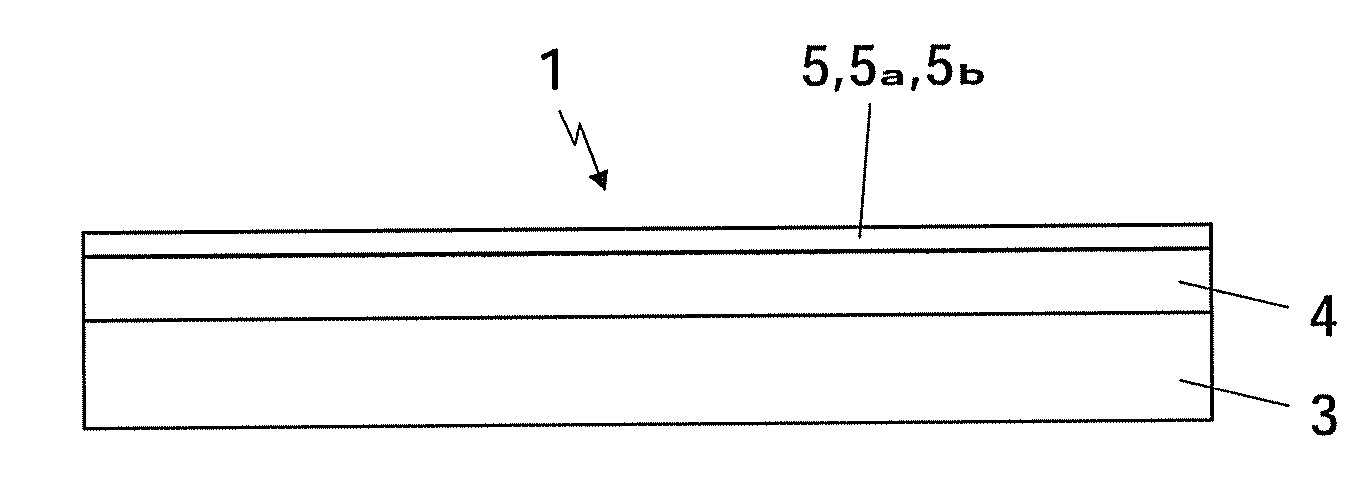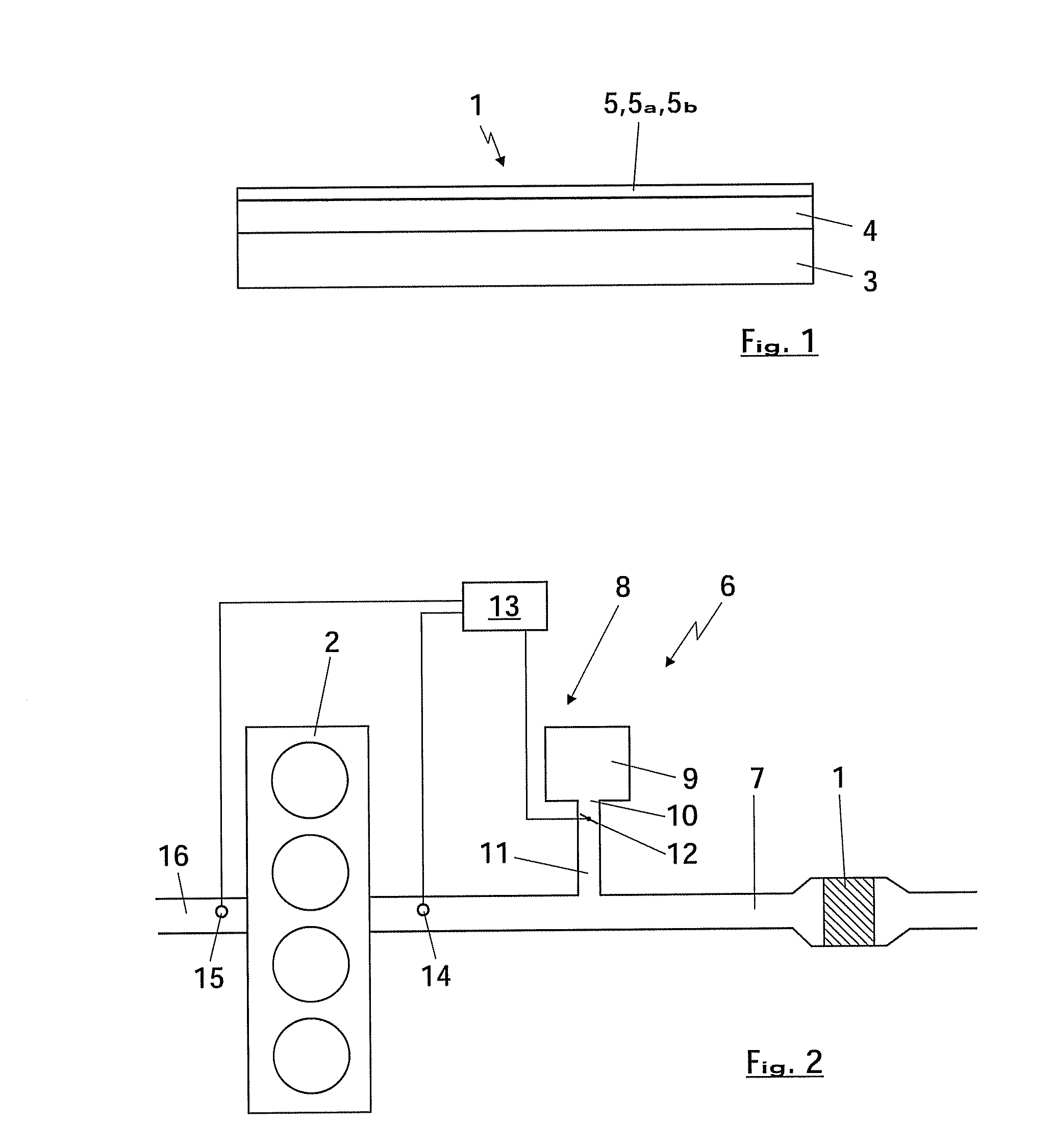Process for producing an SCR catalyst
a catalyst and process technology, applied in physical/chemical process catalysts, metal/metal-oxide/metal-hydroxide catalysts, separation processes, etc., can solve the problems of complex filtration and/or purification processes, poor short- and long-term activities of catalysts in which active components are present in ion-exchanged forms, and inability to reduce nosub>x/sub, etc., to achieve the effect of reducing nitrogen oxides
- Summary
- Abstract
- Description
- Claims
- Application Information
AI Technical Summary
Benefits of technology
Problems solved by technology
Method used
Image
Examples
Embodiment Construction
[0029]FIG. 1 shows, very schematically, a first embodiment of an SCR catalyst 1 which serves for the selective reduction of NOx in the exhaust gases of an internal combustion engine 2 which is shown in FIG. 2 and preferably operates according to the diesel principle. The catalyst 1 has a substrate body 3 which gives the catalyst rigidity and can, for example, be configured as a honeycomb body and can consist of a ceramic material. The substrate body 3 can also be designed as a particle filter in order to filter any soot particles from the exhaust gases. As an alternative, it is also possible for the substrate body 3 to be made of a metal substrate, with the honeycomb shape bringing the advantage of a low pressure drop.
[0030]A support layer 4 which is preferably extremely porous and preferably has a surface area of at least 50 m2 / g, more preferably at least 100 m2 / g, is applied to the substrate body 3. For the support layer 4, it is possible to use either a zeolite, in particular a b...
PUM
| Property | Measurement | Unit |
|---|---|---|
| surface area | aaaaa | aaaaa |
| offgas temperatures | aaaaa | aaaaa |
| temperature | aaaaa | aaaaa |
Abstract
Description
Claims
Application Information
 Login to View More
Login to View More - R&D
- Intellectual Property
- Life Sciences
- Materials
- Tech Scout
- Unparalleled Data Quality
- Higher Quality Content
- 60% Fewer Hallucinations
Browse by: Latest US Patents, China's latest patents, Technical Efficacy Thesaurus, Application Domain, Technology Topic, Popular Technical Reports.
© 2025 PatSnap. All rights reserved.Legal|Privacy policy|Modern Slavery Act Transparency Statement|Sitemap|About US| Contact US: help@patsnap.com


